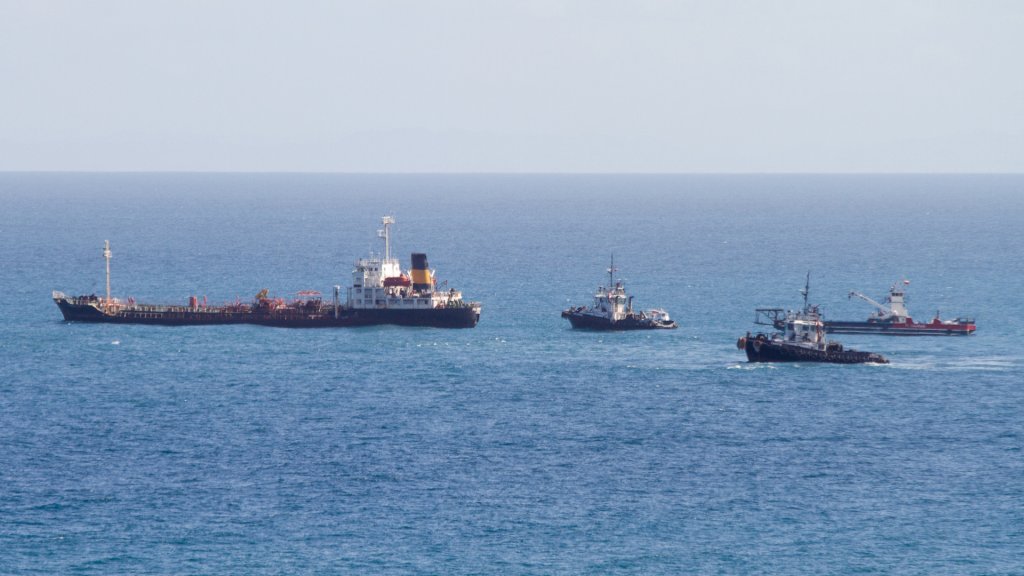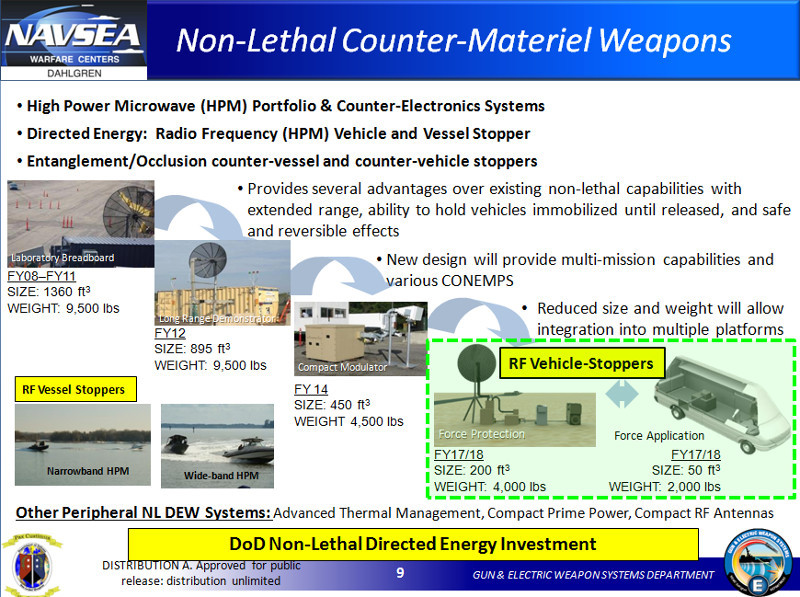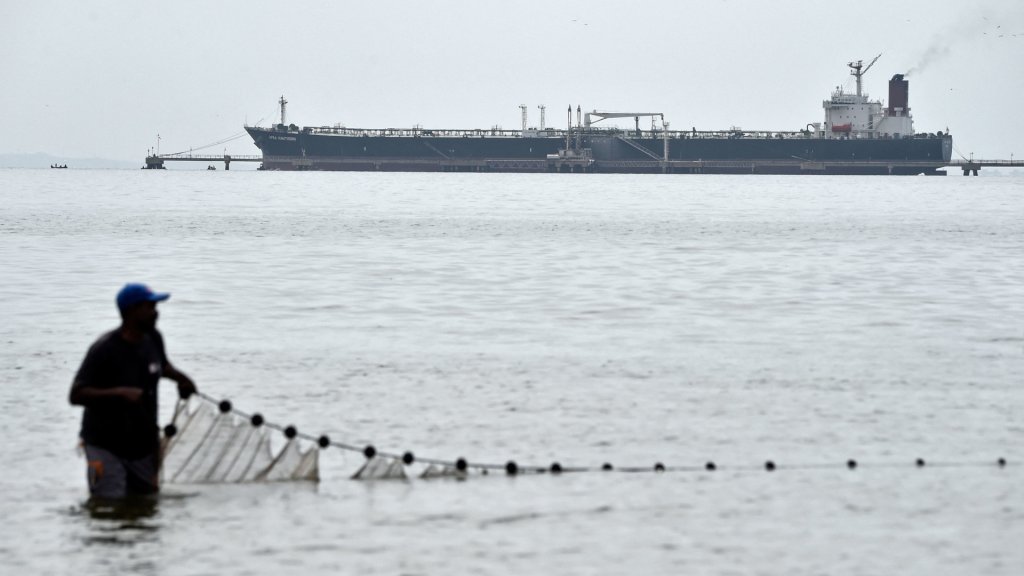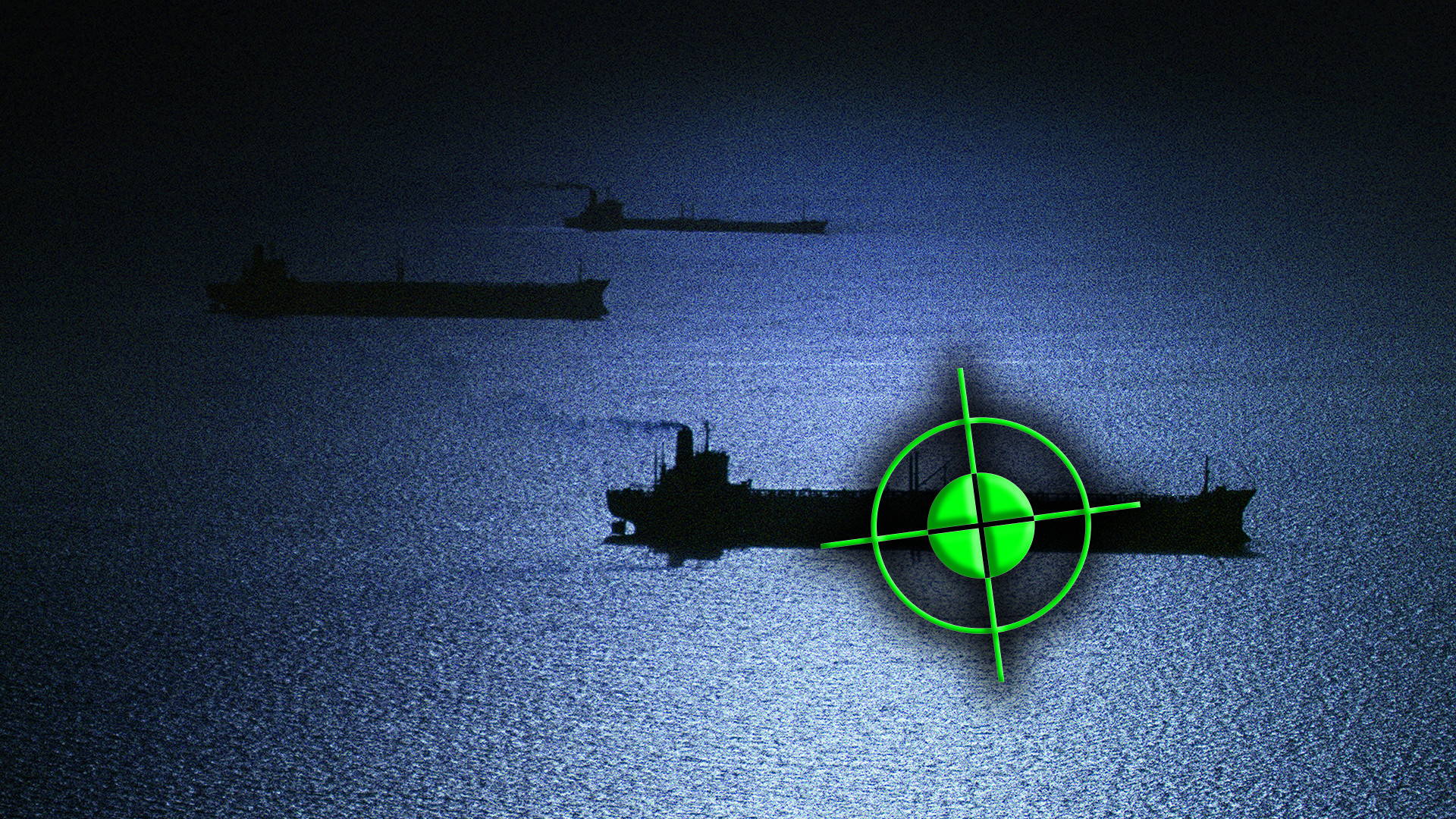The U.S. Central Intelligence Agency reportedly has at least one mysterious system capable of “covertly (and nonviolently)” disabling ships, including very large ones. The secret system is said to have been considered for use against fuel tankers sailing between Venezuela and Cuba during President Donald Trump’s term in office.
A mention of the CIA ship-disabling system is included in a detailed exposé about the Trump administration’s unsuccessful efforts to overthrow dictatorial Venezuelan President Nicolas Maduro that Wired published on October 31 and is worth reading in full. The report describes a host of efforts that the U.S. government and foreign partners undertook to try to unseat Maduro between 2018 and 2020. This includes a cyber attack on the payroll system for Venzeuzla’s armed forces, sabotage raids by Colombian operatives targeting the Venezuelan Air Force’s Russian-made Sukhoi Su-30 fighters, and support for opposition leader Juan Guaido’s attempt to overthrow Maduro’s government.

“Cuba relies on oil from Venezuela. In return, US officials believe, the Cuban security services have helped protect Maduro, essentially serving as an on-the-ground praetorian guard for the embattled socialist autocrat,” per Wired‘s report. “The Trump administration thought if the US could somehow intercept or sabotage the oil ships sailing from Venezuela to Cuba, it could strike a blow against both regimes.”
“At least one option involved the CIA, which had a mobile system that could covertly (and nonviolently) disable ships. Trump administration officials wanted the agency to move the system near Venezuela, to hit some of its fuel tankers,” the story continues. “The agency balked. CIA officials explained that it only had one of these systems, that it was currently in another hemisphere, and they didn’t want to move it to the northern end of South America. The idea was shelved.”

No specific details about the CIA’s ship-stopping system, including its ‘nonviolent’ method of function, are provided in Wired‘s piece, but there are some clear possibilities.
What comes to mind first is the possibility that the system in question creates the intended effects by pumping out bursts of high-power microwave (HPM) energy. This could allow for the destruction, disabling, or disruption of key systems, such as radars, computerized navigation gear, communications suites, steering systems, and electronic engine control systems, in turn stopping a vessel, but also leaving its crew unharmed.
“HPM weapons create invisible beams of electromagnetic energy within a specific spectrum of radio and microwave frequencies that can cause a range of temporary or permanent effects on electronic targets. Examples include non-kinetic disabling of computer systems, damaging targeted electronics, disrupting security and industrial control systems, etc,” a 2023 press release related to a U.S. Air Force/U.S. Navy program called High-power Joint Electromagnetic Non-Kinetic Strike (HiJENKS) explains. “Electromagnetic energy from an HPM weapon can couple to an electronic target directly through a transmit or receive element (like an antenna), or indirectly, through an aperture or cable points of entry (e.g., cracks, seams, external wires). Currents and voltages can be induced in target circuitry, resulting in erroneous signals, system lock-up, system failure, and/or physical damage.”
Publicly available details about HiJENKS remain limited, but this capability was successfully demonstrated at least once during a live-fire test event at the Navy’s sprawling China Lake test center in 2022. HiJENKS also follows on from the similarly secretive Counter-Electronics High-Power Advanced Microwave Project (CHAMP) missile containing an HPM generator payload, which Boeing is understood to have delivered at least a small number of to the Air Force.

The U.S. military is also known to have at least funded work in the past on lower-tier HPM systems designed to stop smaller watercraft, as well as vehicles, including ones rigged up as suicide bombs, on land.

An HPM-based system could require getting the source relatively close to the target, which might also be difficult to do covertly. Employing uncrewed aerial or maritime platforms, or disguised ‘civilian’ ones, configured to launch an ‘attack’ of this kind would potentially offer ways to reduce the chance of detection and/or attribution. A nuclear submarine-based capability is also possible.
The CIA’s ship-stopping system might also be capable of launching some other kind of highly-targeted electronic or cyber warfare attack to produce broadly similar effects. An electronic attack that blinds key sensors and communications could stop or slow a vessel. A cyber attack could disable key industrial control systems on a ship, bringing it to a halt, but it would require a vector to breach those systems externally from the vessel.
All of this evokes the memory of still unsubstantiated reports of the U.S. government’s use of less-than-lethal “stun bombs” in Libya in 2011 and “electricity bombs” in Syria in 2017. The War Zone previously explored the potential legitimacy of those claims, including as evidence of novel directed energy and/or electronic/cyber warfare attacks, as well as other possibilities, in detail.
Some kind of physical mode of attack, such as one that causes an obstruction to certain features of ship, including elements of its propulsion system and rudders, and that doesn’t cause permanent damage, could be another option. Systems designed to slow or stop a vessel by fouling its propellers do exist, as seen in the video below, though they are generally intended for use against smaller watercraft. Prop foulers have been used to disable larger ships, but usually during harassment activities with a ship towing a long chain with floaters on it or other improvised obstruction mechanisms. It’s possible an unmanned craft could be adapted for this, but those are very dynamic operations that require a lot of situational awareness to pull off successfully. Innocuous accidents involving ship propellers getting tangled up in a fishing net also do just happen.

A system designed to initiate a physical less-than-lethal attack sufficient enough to hamper the movement of a large ship like an oil tanker, and doing so covertly, seems less likely than the aforementioned, less physically invasive options. Getting an obstructing device of some kind successfully in place discreetly, especially in front of or on a vessel in motion, could present significant challenges.
It’s unknown whether or not the CIA has expanded its inventory of the system that Wired reported on in recent years or has any other similar ones in its toolkit now. The fact that there was just one, at least at the time, points to a somewhat exotic and/or experimental capability.
The CIA is certainly well-known at this point for developing or supporting the development of novel means of targeting adversaries, lethally and non-lethally. For instance, the Agency had a hand in the development of the specialized low-collateral damage AGM-114R9X version of the Hellfire missile, which features an array of pop-out knife-like blades rather than a high-explosive warhead.
The details from Wired‘s story that the CIA “only had one of these systems, that it was currently in another hemisphere, and they didn’t want to move it,” are also very interesting regardless of how the reported ship-stopping capability works. This would seem to point to the system in question being forward deployed outside of the Western Hemisphere already, and possibly with a very specific target set in mind. This might also indicate a reticence to potentially expose what this system can do absent an especially serious crisis or very high priority, clandestine operations.

Regardless of its specific mode of function, it is not at all hard to see how a covert and less-than-lethal ship-stopping capability would be highly attractive. For instance, it could be of great use for visit, board, search, and seizure (VBSS) operations. Stopping a ship, and even possibly cutting off its sensors and power, could make boarding and seizing control over it much easier. In areas where a VBSS or other special operations boarding teams are not present and will take too much time to there, such a system could stall the ship in preferred waters until critical capabilities arrive. Beyond just making a raid easier and safer, this all could be especially useful for responding on very short notice to top-priority actionable intelligence, such as alerts about the smuggling of particularly worrisome cargoes like nuclear material.
There are many other applications, as well. When used against military vessels, we are talking about taking the ship offline, or at least stopping it from moving and leaving it more vulnerable without firing a shot.
Altogether, while Wired‘s report provides limited details, the ship-stopping capability described therein would make good sense for the U.S. government to have up its sleeve.
UPDATE: 6:50 PM EST —
User @PutinIsAVirus on X has called attention to how cyber warfare was reportedly an important component of a reported clandestine Israeli campaign against Iranian oil tankers at around the same time the U.S. government was considering using the CIA ship-stopping system against Venezuela, though there are no indications that two things were related. Other Iranian infrastructure was also reportedly hit by cyber attacks in that time frame.
It is also worth noting that the U.S. government reportedly launched cyber attacks earlier this year against the M/V Behshad, an Iranian vessel operating in and around the Red Sea and acting as a covert mothership and intelligence-gathering platform. An Iranian frigate was also reported to have been targeted. Again there are no indications one way or the other that this is related to the CIA’s reported ship-stopping capability.
Contact the author: joe@twz.com
